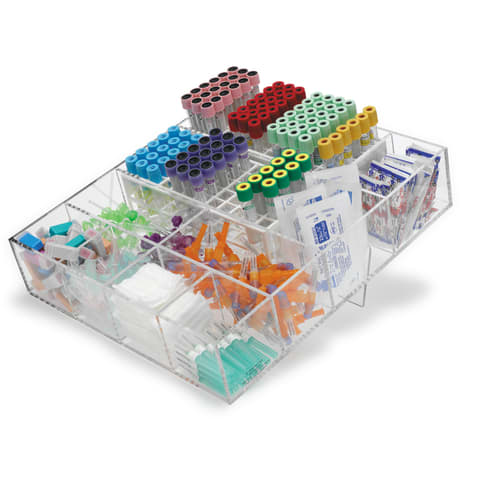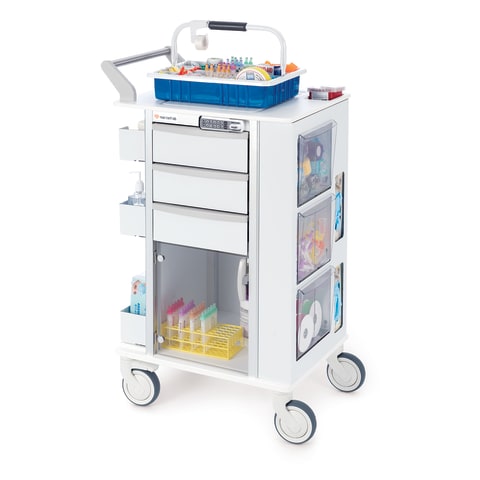More than 50% of all healthcare-professional injuries are caused by overexertion, with almost half of those classified as musculoskeletal disorders (MSDs) — injuries to the muscles, tendons, ligaments, joints, or nerves.
Poorly constructed, unorganized workspaces and supplies are often to blame for phlebotomy-related MSDs due to designs that increase straining, stretching, and repetitious and awkward movements. And after a long day of working with patients if “Head, Shoulders, Knees, and Toes” starts to sound more like a list of sore body parts than a children’s song, it might be time to focus on ergonomics.
While there are a number of ergonomic options designed to prevent specific injuries, the importance of well-designed and organized phlebotomy stations, carts, and trays can’t be stressed enough. Easy access to supplies and waste containers not only reduces twisting, straining, and bending, but also expedites the blood-draw process.
Below are a few more of our favorite ergonomic solutions to common phlebotomy-related MSD injuries:
1) What Hurts: My Back
What could be causing it
Awkward positioning during blood draws, repetitive twisting or straining while reaching for supplies, standing for long periods of time
What may reduce it
Adjustable draw chairs reduce phlebotomists’ awkward positioning and can help prevent MSDs, especially back strain. Phlebotomy wedges are cost-effective alternatives that reduce bending during draws.
2) What Hurts: My Wrist
What could be causing it
Flexing or turning wrists to access or dispose of supplies, frequently reaching for supplies and tools
What may reduce it
Phlebotomy carts and trays with easily organized storage spaces allow for better accessibility, reducing the need to reach and twist for supplies. Personal tube holders or holders that attach to wrists or arms keep tubes safe and close at hand.
3) What Hurts: My Feet/Legs
What could be causing it
Standing or walking for long periods of time, pushing unwieldy phlebotomy carts
What may reduce it
Height-adjustable draw carts with smooth, large casters create less resistance while transporting equipment and bending to reach supplies. Cushioned and antifatigue floor mats help to reduce stress and strain on legs, feet, and lower backs.
4) What Hurts: My Hands/Fingers
What could be causing it
Hard-to-manage-and-carry phlebotomy trays, poorly fitting gloves, repetitive hand motions including grasping, twisting, and flexing
What may reduce it
Phlebotomy trays with comfortable grips reduce hand pain. Dispensers that hold multiple glove boxes help to ensure numerous glove sizes are always on hand.
For more ergonomic solutions, check out Marketlab.com.



Hi Rachel!
I love this information! Is there a way we can talk? I want to use post a link to my site and was thinking maybe I could guest post for you. My site is all about phlebotomy- it is phlebotomycertification101.com.
Please let me know,
thanks,Toba